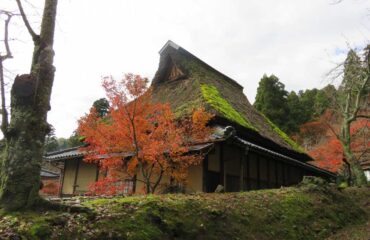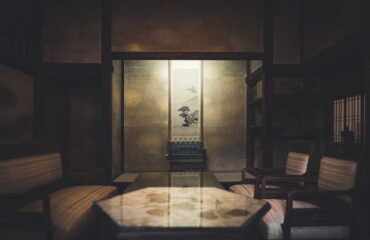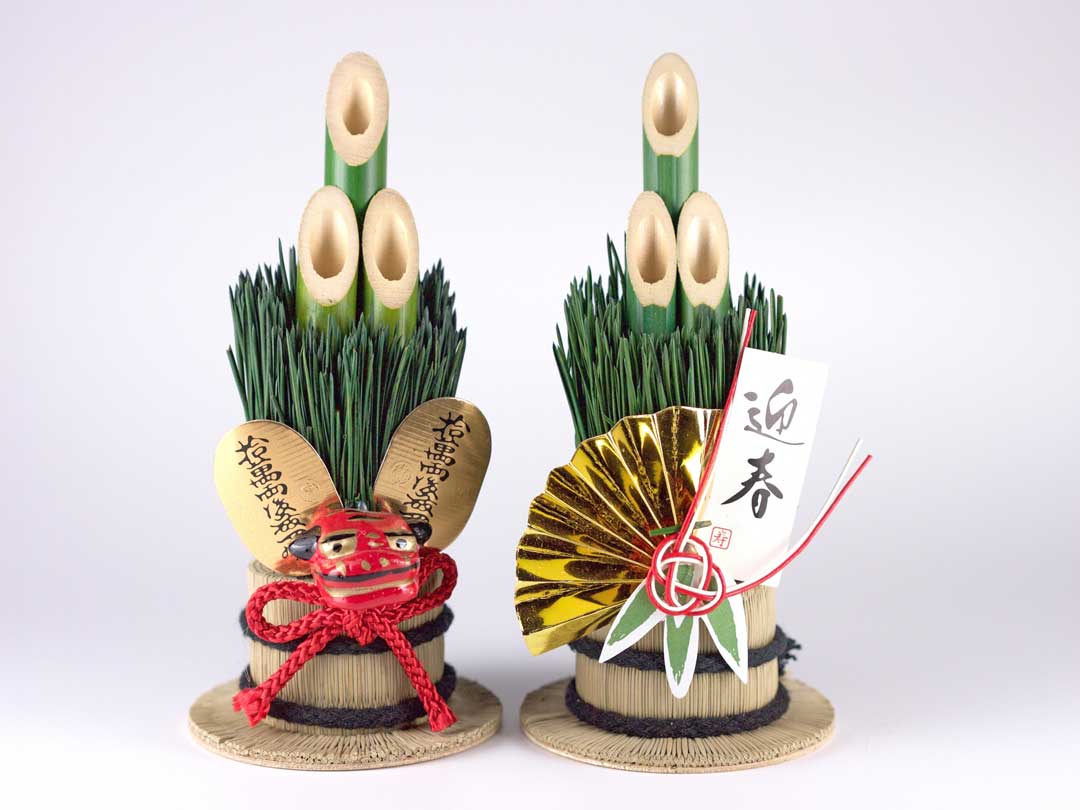
Kadomatsu, a pair of decorations placed in front of homes during the New Year, is a tradition that holds much meaning and history.
However, many may not understand why they are displayed, or what their significance truly is.
It is important that we can explain these traditions to younger generations.
In this blog post, we will delve into the various meanings and origins of Kadomatsu.
The Meaning of Displaying Kadomatsu
Kadomatsu is traditionally displayed at the entrances of homes during the New Year.
This tradition is significant because it acts as a marker for the Toshigami, the deity of the New Year, who brings blessings and prosperity for the year.
By displaying the Kadomatsu, we are able to welcome the Toshigami into our homes.
In addition, it’s believed to serve as a temporary resting place for the deity.
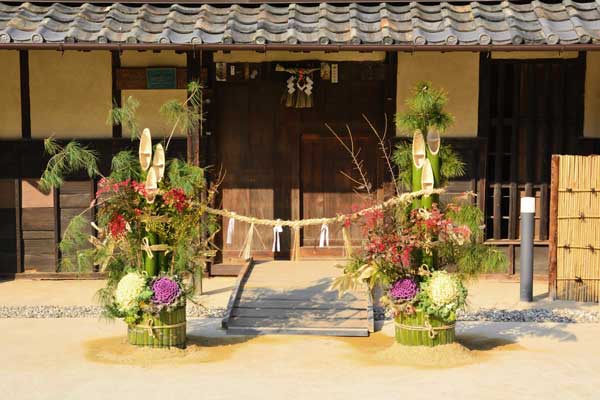
The Origin of Kadomatsu
The practice of displaying Kadomatsu originated from an ancient ceremony during the Heian period known as ‘Komatsuhiki’.
Komatsuhiki was a ritual performed on the first “Day of the Rat” of the year to pray for longevity, where a pine tree would be pulled out.
‘Days of the Rat’ are designated days that occur once every 12 days, a tradition that is still marked on some calendars today.
The first appearance of Kadomatsu in historical texts dates back to the late Heian period, where initially only pine was displayed at entrances.
Bamboo, which symbolizes longevity, began to be used from the Muromachi period onwards.
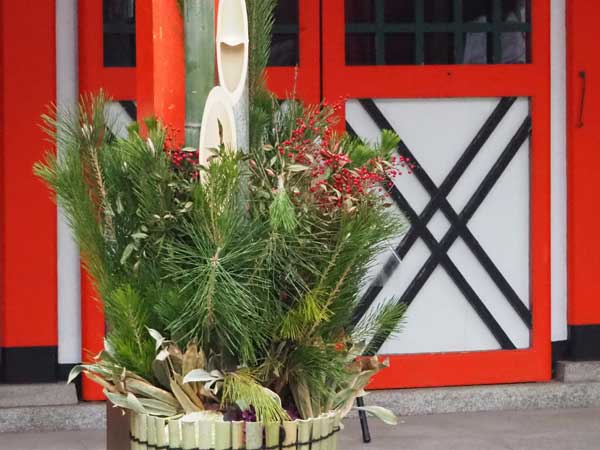
The Meaning of Each Element of Kadomatsu
-
Pine (Matsu): As an evergreen tree that retains its leaves throughout the year, the pine symbolizes longevity and health. The term ‘Matsu’ also implies waiting for the gods, hence why it is used in these decorations.
-
Bamboo (Take): Bamboo, which grows straight and fast, symbolizes vitality and prosperity. The nodes of the bamboo also represent significant milestones in life.
-
Plum (Ume): As the first flower to bloom each year, the plum flower symbolizes good fortune.
-
Nandina (Nanten): Known for its red berries, Nandina is often used in New Year and celebratory decorations. It symbolizes the reversal of misfortune and the realization of heavenly aspirations.
-
Flowering Kale (Habotan): With its layered leaves, the flowering kale symbolizes the accumulation of good fortune.
-
Sasa Bamboo (Kumazasa): Often distributed during Toka Ebisu, a festival celebrating business prosperity, sasa bamboo represents prosperity and vitality.
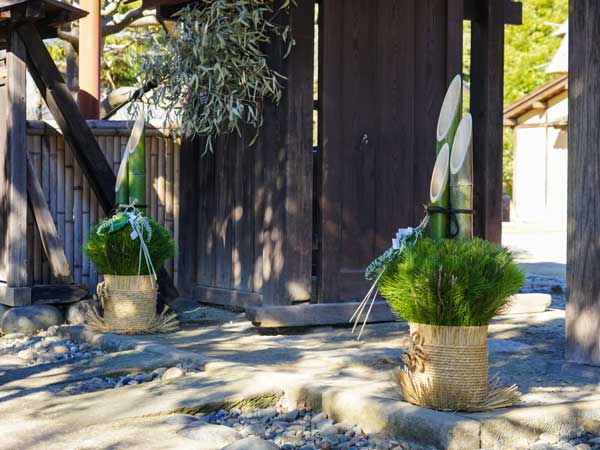
When to Display Kadomatsu
Kadomatsu and other New Year decorations are typically displayed during the period known as ‘Matsunouchi’, which runs from December 13th to January 7th in some regions, and up to January 15th in others.
From the 13th of December, known as the ‘Start of New Year’s Preparations’, it is acceptable to display Kadomatsu at any time.
However, it is recommended to avoid certain days that are considered unlucky, such as the 29th and 31st.
Where to Display Kadomatsu
As Kadomatsu serves as a marker for the Toshigami, it should ideally be displayed on either side of the entrance or gate to your home.
If you live in an apartment or housing complex where outdoor decorations aren’t possible, it can also be displayed inside near the front door.
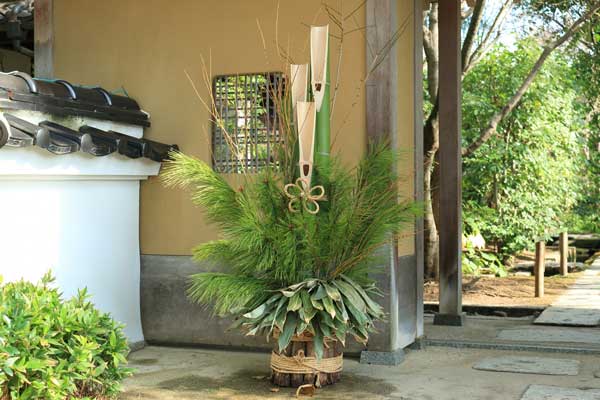
Differences between the Male and Female Kadomatsu
In the pair of Kadomatsu, one is considered to be male (omatsu) and the other female (mematsu).
Both are displayed together to protect the harmony and happiness of the household.
The placement of the omatsu and mematsu varies by region.
Generally, looking from the gate, the omatsu is placed on the left side and the mematsu on the right, following the traditional Japanese rule of ‘left high right low’.
However, in some regions, the omatsu is placed on the right and the mematsu on the left.
In addition, the height of the Kadomatsu is also important.
Typically, it should not exceed the height of your entrance or gate. This is believed to allow the deity to oversee the house.
Conclusion
Kadomatsu is one of Japan’s traditional cultures, with rich meanings embedded in its decorations.
As an adornment to celebrate the arrival of the new year with the gods, Kadomatsu is widely loved across Japan.
By understanding the profound meaning and origins of Kadomatsu through this article, why not enhance your New Year’s celebration?
Other Introduction
Ikebana: The Art of Japanese Flower Arrangement
Bonsai Basics: A Beginner’s Guide


